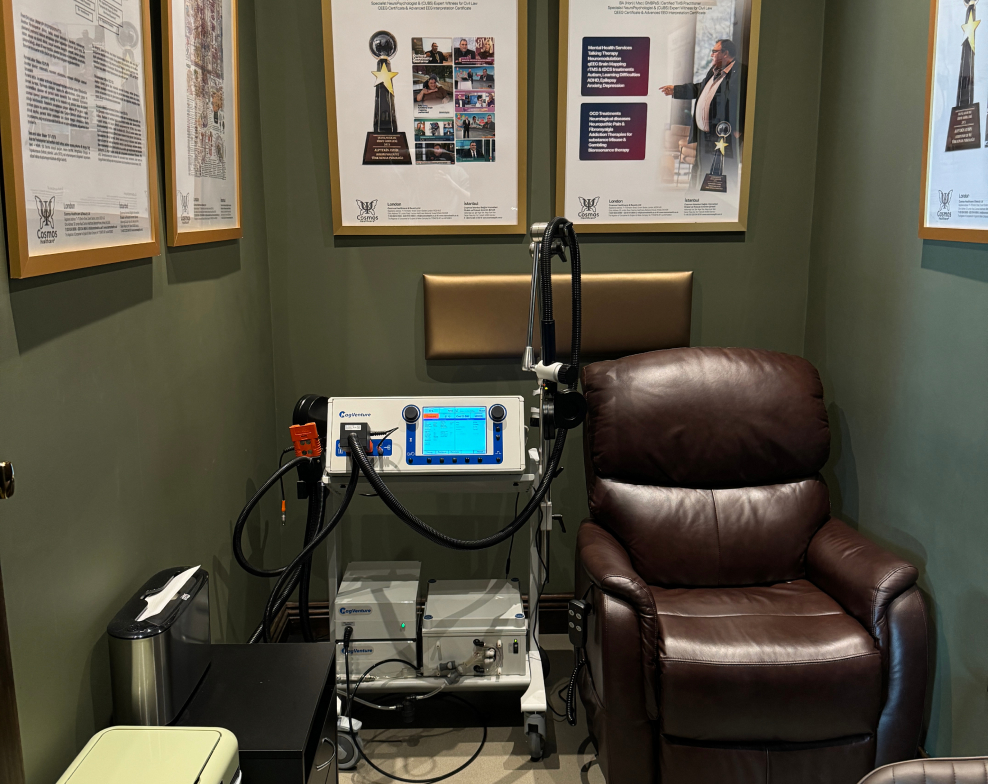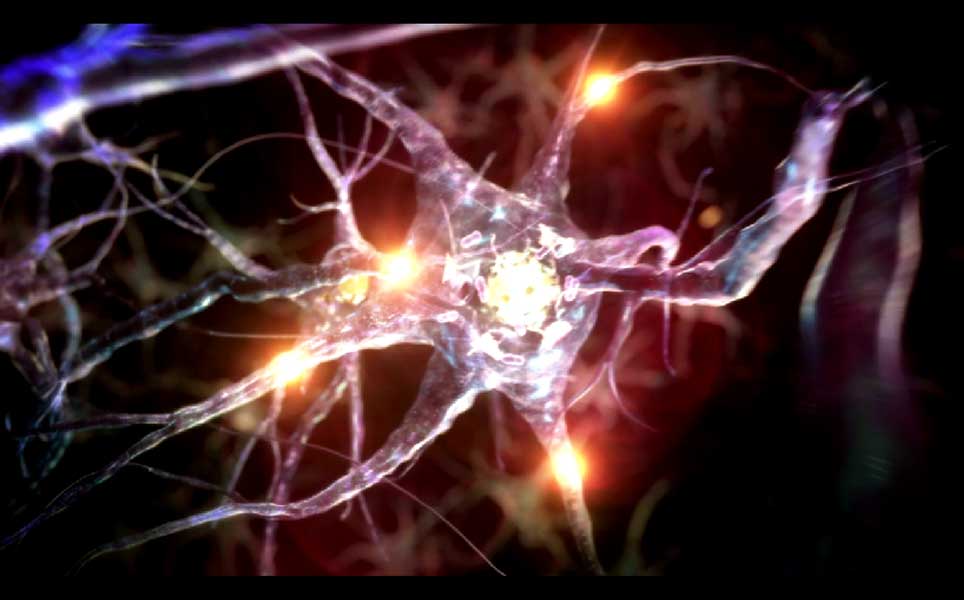

The method of using qEEG-Guided home-based tDCS treatment represents a groundbreaking innovation in neuromodulation for anxiety and panic attacks.
Anxiety and panic disorders stem from fundamental neurophysiological dysfunctions that change how the brain detects and responds to stress. People suffering from constant anxiety or intense panic attacks become stuck in a repetitive pattern of intense fear response together with excessive worrying and continual feelings of vulnerability. These disorders emerge from dysregulated neural circuits that develop hyperreactivity patterns which transform regular situations into perceived threats.
Medication alongside talk therapy formed the foundation of anxiety treatment for many years yet these methods prove inadequate for people experiencing symptoms that resist treatment. Medications like SSRIs and benzodiazepines function systemically by changing brain chemistry throughout the entire neural network instead of focusing on specific anxiety circuits. The use of these medications results in side effects and dependency risks as well as a challenging trial-and-error procedure to identify the correct medication.
Therapy helps develop coping mechanisms but lacks the ability to directly modify brain activity which usually drives chronic anxiety and panic attacks.
The development of qEEG-Guided Personalized Home-Based Transcranial Direct Current Stimulation (tDCS) revolutionized treatment methods and delivers an effective non-invasive targeted solution to address anxiety disorders at their biological origin.
qEEG-based neuromodulation provides rapid relief and long-term stability by precisely identifying and modulating the specific brain regions which cause excessive fear responses and chronic worry unlike traditional interventions.
This review explains how qEEG-Guided Neuromap approaches optimize at-home transcranial direct current stimulation treatment for individuals with anxiety and panic disorders.
Traditional treatments rely on generalized symptom-based strategies but qEEG functional brain mapping delivers customized maps of brain activity that display distinct dysregulation patterns for each patient. Through an analysis of neural oscillations, brain connectivity patterns, and cortical excitability data the Neuromap algorithm identifies specific brain regions that require stimulation to increase resilience or inhibition to decrease overactivity.
People who experience generalized anxiety disorder (GAD), panic disorder, social anxiety, or post-traumatic stress disorder (PTSD) have distinct neurophysiological abnormalities which qEEG scans consistently detect.
– The amygdala which serves as the brain’s fear-processing center demonstrates hyperactivity that leads to ongoing alertness and distress within the nervous system.
– Patients who experience diminished function in their left dorsolateral prefrontal cortex (DLPFC) show compromised abilities for emotional control and suppressing unwanted thoughts.
– The right hemisphere shows excessive activity which connects to a pattern of rumination and excessive worry along with a tendency toward negative emotional perspectives.
– The autonomic nervous system loses proper regulation which results in symptoms including heart palpitations along with shortness of breath, dizziness and ongoing muscle tension.
Standard treatment approaches focus on symptom suppression but fail to tackle the underlying brain dysfunctions. Home-based tDCS therapy guided by qEEG influences brain circuits responsible for anxiety and panic allowing the brain to learn better emotional response regulation.
Home-based tDCS offers therapeutic advantages for anxiety and panic attack management.
Transcranial Direct Current Stimulation (tDCS) represents a portable non-invasive brain stimulation method which uses mild electrical currents through the scalp to gently adjust neural activity. The procedure operates painlessly and simply while providing home-based treatment under professional clinical supervision with remote monitoring capabilities.
People with severe anxiety and panic disorders need home-based treatment options because their conditions including agoraphobia and social anxiety prevent them from accessing traditional clinic-based therapy. Home-based tDCS enables patients to undergo individualized neuromodulation therapy without disrupting everyday activities while providing an effective and scalable treatment solution.
The qEEG-guided Neuromap analysis enables tDCS treatment to be tailored to each individual’s brain patterns so stimulation targets the exact areas necessary for maximum therapeutic benefits. The precise delivery enables quick relief from symptoms alongside enhanced emotional resilience and enduring neural stability.

This section explains how personalized tDCS neuromodulation effectively treats anxiety and panic attacks by tailoring treatment to individual brain patterns.
Home-based tDCS effectively treats anxiety and panic disorders by rebalancing crucial brain regions involved in emotional regulation and fear processing which control autonomic nervous system functions. By delivering mild, targeted electrical currents , tDCS:
– The left dorsolateral prefrontal cortex (DLPFC) receives stimulation which improves rational thinking and emotional regulation while enhancing cognitive control over fear responses.
– Stops hyperactive neural circuits from operating in the right prefrontal cortex which leads to a decrease in excessive worry and negative thought patterns along with overactive stress responses.
– tDCS adjusts the interaction between the amygdala and prefrontal cortex which reduces fear signals and achieves emotional stability and calmness.
– The improved functioning of the autonomic nervous system enables better regulation of breathing patterns along with heart rate and muscle tension and this leads to reduced physical manifestations during panic attacks.
tDCS facilitates retraining of stress response patterns in the brain which leads to patients experiencing less frequent panic attacks that are less severe while they enjoy greater emotional stability and enhanced ability to handle anxiety-inducing situations.
Scientific studies demonstrate effective and long-lasting results of qEEG-guided tDCS therapy for patients suffering from anxiety and panic disorders.
New scientific findings reveal that qEEG-guided tDCS therapy produces durable positive results for patients suffering from anxiety and panic disorders. Clinical trials have demonstrated that:
– People who undergo qEEG-tailored tDCS therapy experience quicker relief from anxiety symptoms as compared to those who receive standard tDCS treatment.
– Home-based tDCS treatment provides long-term relief for treatment-resistant anxiety patients by significantly lowering both generalized anxiety and panic attack frequency.
– The neuromodulation effects of tDCS produce structural and functional alterations in the prefrontal cortex and limbic system including the amygdala which help establish healthier patterns of emotional processing.
Targeted tDCS therapy led to a 67% decrease in symptom severity for patients with generalized anxiety disorder according to research published in *Brain Stimulation*, with these benefits persisting beyond the treatment period.
The advancement of qEEG-guided tDCS treatments administered in the comfort of one’s home signifies a revolutionary approach to managing anxiety and panic disorders.
The evolution of mental health treatments toward neuroscience-based precision has enabled qEEG-guided home-based tDCS therapy to become a significant advancement for treating anxiety and panic disorders. Patients benefit from individualized brain stimulation treatments that target their symptoms’ root cause through data-driven methods instead of trial-and-error medication use or generalized psychological methods.
The non-invasive character of tDCS combined with its usability at home and quick symptom alleviation capabilities transforms anxiety and panic disorder treatments. By combining qEEG and Neuromap technology patient-specific treatment plans promote faster recovery times reduce relapse rates and help patients regain mental health control.
People who have endured many years of constant anxiety and unexpected panic attacks can achieve both immediate relief and lasting stability through qEEG-directed personalized tDCS therapy which also promotes resilience and emotional health. The innovative treatment method developed through neuroscience advancements will transform mental health care by offering hope to millions suffering from anxiety disorders across the globe.